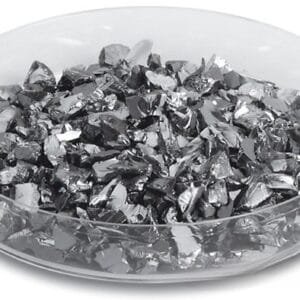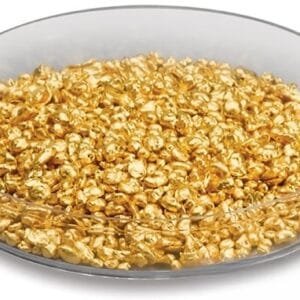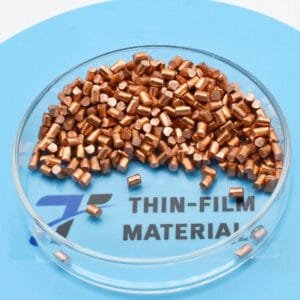Chromium(III) sulfide, with the chemical formula Cr₂S₃, is a high-purity ceramic evaporation material provided by TFM. This material plays a significant role in deposition processes, ensuring the production of high-quality films. TFM excels in manufacturing evaporation materials with purity levels reaching up to 99.9995%, supported by rigorous quality assurance measures to ensure product consistency and reliability.
Product Details
| Material Type | Chromium(III) sulfide |
| Symbol | Cr2S3 |
| Appearance/Color | Brown to black solid |
| Melting Point | 1350 °C |
| Density | 3.77 g/cm3 |
| Purity | 99.9% |
| Shape | Powder/ Granule/ Custom-made |
Applications
Chromium(III) sulfide evaporation materials are utilized in various deposition techniques, including:
- Semiconductor Deposition: Vital for the production of high-quality semiconductor films.
- Chemical Vapor Deposition (CVD): Used to create thin films with precise composition and thickness control.
- Physical Vapor Deposition (PVD): Applied in several industries for high-performance and durable coatings.
These materials are particularly beneficial in the optics sector, including applications such as wear-resistant coatings, decorative finishes, and display technologies.
Packaging and Handling
To maintain the quality and integrity of Chromium(III) sulfide evaporation materials, TFM ensures that all materials are clearly labeled for efficient identification and quality control. Packaging is designed to prevent damage during storage and transportation.
Contact Us
TFM is a premier supplier of high-purity Chromium(III) sulfide evaporation materials, available in various forms such as tablets, granules, rods, and wires. Custom shapes and quantities can also be provided to meet specific requirements. In addition to evaporation materials, TFM offers evaporation sources, boats, filaments, crucibles, heaters, and e-beam crucible liners. For the latest pricing and information on our products, please contact us with your inquiry.


 MSDS File
MSDS File



Reviews
There are no reviews yet.